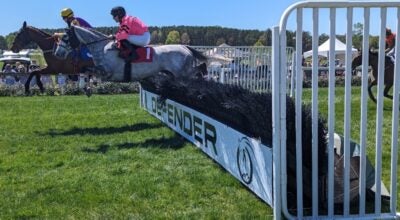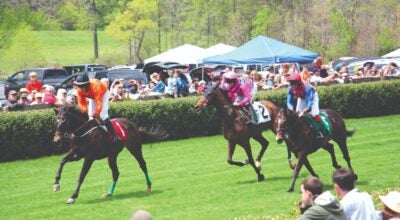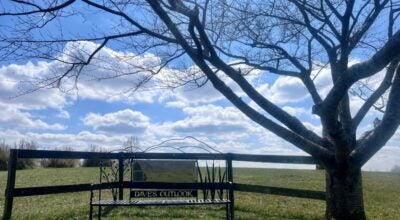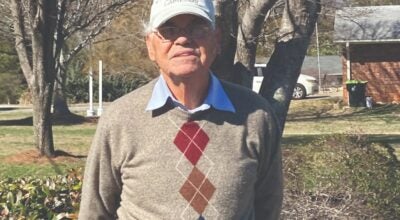Learning from horses: Dressage rider Whitney Penney Mical
Published 12:04 pm Wednesday, September 30, 2009
Whitney Penney Mical was born and raised in Daytona Beach, Fla. She came from a riding family. Her mother took her to the barn at the early age of four and she started riding a wonderful pony named Cricket.
&dquo;And what a patient and lovely soul she was!&uot; Mical says.
Mical had to clean her pony&squo;s stall before she had a riding lesson, and only when it was done correctly and was clean enough was she able to have her lesson that day.
&uot;This taught me that there was more to riding and having a lesson, and that care of the horse was of first importance,&uot; Mical says.
From the ages of eight to 14 Mical danced in ballet. She says she believes balance and graceful movements have certainly helped her with dressage. An Achilles tendon injury curtailed her ballet career while she was trying out for the Aspen Ballet Company.
Once she returned to riding seriously, she found that she wanted to focus and specialize on dressage. She says she wanted to learn from the best trainers in the U.S. and Europe. She returned to the states from Europe in her early twenties and started riding professionally in California. &bsp;
Mical moved to the Tryon area in June of 2005 and currently rides out of her family farm, Pennwood, which is owned by her mother, Kemper Penney. She is finishing her bachelor&squo;s degree in nursing from Gardner-Webb University with a minor in psychology. She plans to continue her education for a master&squo;s degree in practical nursing specializing in women&squo;s health.
&uot;I am married to a wonderful man, Dennis Mical, who besides my mother, is my biggest supporter,&dquo; says Mical.
Mical has been a successful FEI level rider since 1995. She credits her current professional career to the training she received from the late Dietrich Von Hopffgarten of Canada. Other important influences she cites are George Wahl and Christine Stuckelburger of Switzerland and Steffan Peters and Charlotte Bredahl of the United States.
Dietrich Von Hopffgarten was Mical&squo;s most influential teacher, she says. His classical dressage teaching and methods along with a pragmatic forward approach toward horses and riders helped her create a unique and highly successful methodology that underpins her approach to training. Mical&squo;s tutelage with Von Hopffgarten was ongoing for 16 years, including three years as a working student.
From George Wahl, one of the few living masters in dressage, came a year&squo;s worth of instruction on his horses which included his Olympic horses and young Spanish Riding School horses.Wahl&squo;s contribution to MIcal&squo;s education, she says, was his brilliance in teaching piaffe and passage.
Christine Stuckelburger, a 1976 Olympic gold medalist, taught Whitney that even at the international levels of competition, the horse&squo;s welfare comes first. Stuckelburger taught that the the most important necessity for the horse is for him or her to be happy.
Steffen Peters who just won the 2009 World Cup in dressage, was another major influence in Mical&squo;s education. Peters has unparallelled quietness with his horses, Mical says. She feels that her own effectiveness, patience, and softness comes from the year of riding and training she spent with Peters in San Diego.
Charlotte Bredahl, a 1994 Bronze medalist in the Barcelona Games, exposed Mical to an international level of horse management and competition based on the work ethic and drive that it takes to succeed on the international level. With Bredahl, Whitney rode young sale horses and Bredahl&squo;s Olympic horse, Monsieur.
Following this education of formal training for eight years, Mical&squo;s success has included a USDF Bronze and Silver Medal and she was selected as an alternate team member for the 1995 Young Rider&squo;s Team in California.
Mical has trained two horses through the Grand Prix levels and plans to debut her third horse at the Grand Prix level in 2010.Currently she has a horse, Greystroke, that came to her four years ago. He was not performing all that well at the time she got him, according to Mical. She says she was astounded by the lack of confidence he had in himself and she wanted him to return to the state of a happy performing athlete. Now, four years later, he has won all but a few of the shows he has performed in and is schooling at the Grand Prix level.
&dquo;Training and performance are complex processes. They do not provide the static outcomes that I associate with mistakes or successes. As a rider, I learn from every horse, and every horse has provided me with valuable experiences and has added to the breadth of my knowledge whether the experience is positive or negative,&dquo; says Mical.
According to Mical, &dquo;The training of modern dressage has changed very little in the past centuries, but the breeding of dressage horses has changed dramatically.Breeding dressage horses has become more technical in that breeders can now select very specific traits within the proven performance bloodlines.&dquo;
&dquo;When I think about my equestrian goals, I think of my training program, my training philosophy, my particular strengths, and my relationship with my horses,&uot; Mical says. &uot;One of the places I would like to go is to a level of achievement for recognition. Will I have a horse that will take me to the international competition. The last horse I purchased at his age of six had to have training, time, and patience which made him suitable to become a horse that is now in the process of qualifying for the World Equestrian Games for the Para-Dressage Team. Most every horse that has come into my barn has become significantly more rideable and much happier.&dquo;
Mical says the most important things to her are family, close friends, and working hard to achieve the goals in life she values. She says she loves to accept her challenges with grace and an open mind and heart.





